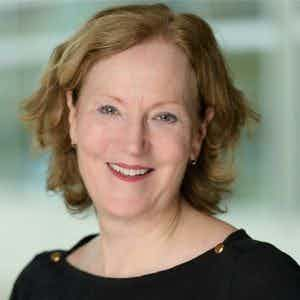On one hand, there is immense concern for the impact of medical negligence on quality of life. On the other hand, it is a central tenant of our legal system to provide equal and predictable rulings to all parties involved. For instances of lost chance, the tension arises over the concern that it can lead to lawsuits based on speculative probability calculations that a different medical approach might have resulted in a better outcome for the patient.
Most states allow for “lost doctrine” cases, though not all. But where it is a valid legal strategy, plaintiffs have found great success in “lost chance” cases as they require a more relaxed burden of proof than negligence cases. These cases also find tremendous support from expert testimony. Here, we explore the lost chance doctrine’s use cases and the impact of expert witnesses on its efficacy.
What is the Lost Chance Doctrine?
The lost chance doctrine, also known as the “increased-risk-of-harm” principle, enables medical patients to recover damages where a healthcare provider’s negligence deprived the plaintiff of a better medical outcome. The heart of this legal standard is a more relaxed burden of proof.
In most medical malpractice negligence cases, a plaintiff must prove that the medical provider failed to comply with the standard of care and that the failure was the proximate cause of the plaintiff’s injuries. For example, in an oncology negligence case, the plaintiff must prove a more than a 50% chance of survival existed, but for the doctor’s negligence. The “more than 50%” standard can be quite difficult to prove, especially in cases determining the impacts of missed or delayed diagnosis for patients where death was extremely likely to occur in any case. The “lost chance” doctrine stands for the proposition that in a society that values human life, a patient that proves some reasonable chance of a different outcome deserves compensation.
Today, medical expert witnesses may present statistically valid patient survival probabilities during lost chance cases. Per reporting by Medical Economics, expert testimony that provides “specific estimates of the chance of survival, when the doctor-patient relationship was established and when treatment was rendered,” gives judges and juries a reasonable basis for damage awards. This doctrine will only continue to expand and form the foundation for actionable claims alongside improvements to medical evidence on survival rates.
A Tour of Lost Chance State Laws
To fully understand the scope of lost chance cases, it’s important to review how the doctrine has performed in courts across the country. In the following cases, expert witnesses played a significant role in the successful or failed usage of the lost chance doctrine.
Dickhoff v. Green
In Dickhoff v. Green, the Minnesota Supreme court overturned a lower court ruling which ushered the “lost chance” doctrine into Minnesota. Previously under Fabio v. Bellomo, lost chance cases were essentially squelched. In Dickhoff, the plaintiff’s pediatric hematology and oncology expert witness testified that the delay in diagnosing a tumor had reduced a baby’s survival odds by 40-60%. The Minnesota high court declared compensatory damages were called for considering this reduction in the patient’s odds of surviving the illness.
The court went on to explain that medical science advancements have made the lost chance doctrine workable. The improved precision and reliability of statistical data on survivability odds from various treatments led the judge to rule that there should be accountability for negligence that increases a person’s chances of dying or becoming more ill. This case highlights the importance of medical science and expert testimony that can show even a less than 50% likelihood of a better outcome.
Acker v. Sullivan
From Wisconsin, the Acker v. Sullivan case shines a light on both medical expert and economic expert testimony in lost chance cases. While pregnant, the plaintiff—Ms. Acker— began suffering seizures. A CAT scan revealed a brain abnormality but doctors advised she wait for an MRI until after delivery of the baby. The next day, the plaintiff’s doctor concluded the abnormality—a tumor—was likely due to a childhood event. But following her child’s birth and with continued contact with her doctor, Ms. Acker suffered another seizure a year later. This time, scans revealed the tumor had tripled in size and complete removal was no longer an option. The plaintiff and her family sued the doctor and won a lost chance case judgment of $1 million following a jury trial in this failure-to-timely-diagnose case. The appellate court found that there was sufficient evidence to put before the jury for determination of whether the doctor’s negligence caused the plaintiff’s injuries.
During trial, the plaintiff’s neurosurgery expert presented testimony that Ms. Acker had a good chance of a cure because of her age, tumor location, small tumor size, the resectability of the tumor when first found, the tumor receptivity to radiation therapy, and other factors. The expert also testified that even if she had not been cured, “her life and quality of life would have been substantially increased.” In addition, the court found the medical expert testimony satisfied the Walstad scientific admissibility standard.
The court also rejected the defendant’s claim that the plaintiff’s economist expert testimony lacked foundation and was insufficient to support the jury’s verdict. Here again, the court upheld the expert testimony presented to the jury. The economist testified that with a normal life expectancy of 65, the value of the loss of household services was $373,159. On appeal, the court ruled that economist’s testimony in combination with the medical testimony that the plaintiff had a favorable chance for recovery if the diagnosis had been made earlier, formed a sufficient evidentiary foundation for the jury’s verdict.
Dunnington v. Virginia Mason Medical Center
A 2017 Washington Supreme Court lost chance ruling in Dunnington v. Virginia Mason Medical Center established that the tougher “but for” causation standard must be met in negligence cases. The plaintiff had requested the lesser “substantial factor” jury instruction to determine if his podiatrist’s missed melanoma diagnosis had reduced the chance of recurrence by 40%. The court disagreed, holding that traditional causation principles guide lost chance cases in Washington.
Prior to this, lost chance causation burdens had proceeded under lesser burden standards. In 1983, in Herskovits v. Group Health Cooperative of Puget Sound, a judge ruled that even a 14% reduction in the survival chances for a lung cancer victim was actionable. Later in Mohr v. Grantham, the Washington Supreme Court clarified that the doctrine could be used even when death was not the ultimate injury. And in Rash v. Providence Health, the court opined that in lost chance cases, the plaintiff must articulate the particular percentage of the lost chance through expert testimony.
Final Thoughts
The lost chance doctrine remains a viable basis for medical negligence lawsuits in many states. In no small part, success of these cases rests on the quality of scientific medical evidence and expert testimony.


